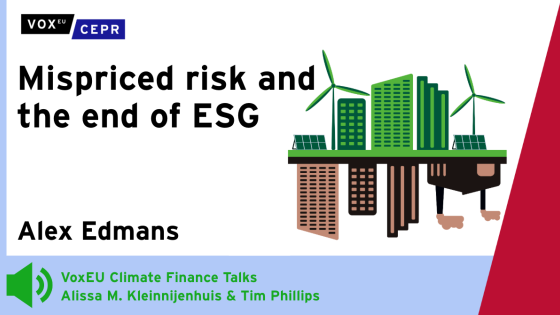Global climate change is a serious environmental threat, and sound public policies will be needed to address it effectively and sensibly. An important consideration in the timing, stringency and design of these policies is the economic cost of achieving emission reductions. Over the years, there has been an on-going debate in the assessment of climate policy costs regarding the presence and extent of so-called “no cost” emission reductions. These no-cost emission reductions may arise when the economic savings of reduced energy consumption resulting from actions taken to reduce emissions exceeds the economic cost of undertaking such action.
This debate has arisen anew in the context of the development of climate policy in California, which began in earnest with the passage of California’s Global Warming Solutions Act of 2006. This Act sets a statewide emission target for 2020 that would return the state’s greenhouse gas emissions to their 1990 level. In the lead-up to development of this Act, three studies were released indicating that California can meet its 2020 target at no net economic cost. That is, the studies find not simply that the costs will be low, but that that California’s ambitious target can be achieved through measures whose direct costs are outweighed by the offsetting savings they create. These studies thus conclude that such actions are economically beneficial even without considering the emission reductions they may achieve.
Given the substantial emission reductions that will be required to meet California’s 2020 target, these findings are — to put it mildly — surprising, and they differ dramatically from the vast majority of economic analyses of the cost of reducing GHG emissions. As a result, we were asked by the Electric Power Research Institute to evaluate the three California studies.
We found that, although some opportunities may exist for no-cost emission reductions, the studies substantially underestimate the cost of meeting California’s 2020 target. The studies’ key shortcomings include omission of important components of the costs of emission reduction efforts, and overstated valuation of the offsetting savings that some of those efforts yield through improved energy efficiency. In some cases, the studies focus on the costs of particular actions to reduce emissions, but fail to consider the effectiveness and costs of policies that would be necessary to bring about those actions. While quantifying the full extent of the resulting cost underestimation was beyond the scope of our study, the underestimation is clearly economically significant. Just a few of the flaws we identified lead to underestimation of annual costs on the order of billions of dollars.
This episode is a reminder of a period when similar studies were performed by the U.S. Department of Energy (DOE) at the time of the Kyoto Protocol negotiations. Like the California studies, the DOE studies suggested that substantial emission reductions could be achieved at no cost. Those studies were terribly flawed, and we had thought that such arguments about massive free lunches in the energy efficiency and climate domain had long since been laid to rest. The debates in California have proven otherwise.
As domestic climate policies are considered throughout the world, a critical issue facing policymakers is the choice among alternative policies for achieving emission reductions. Unfortunately, along with providing little insight about the relative cost of policy design alternatives, overly optimistic findings about emission reduction costs like those in the California studies may leave policymakers with an inadequate appreciation of the stakes associated with decisions that lie ahead. Findings of large no-cost emission reduction opportunities also may dispose policymakers to command-and-control regulations that force particular emission reduction measures, instead of market-based approaches to reducing emissions that allow regulated entities to identify and exploit the least costly measures.
On the positive side, a careful evaluation of the California studies highlights some important policy design lessons that apply regardless of the extent to which no-cost emission reduction opportunities really exist. In particular, policies should be designed to account for uncertainty regarding emission reduction costs, much of which will not be resolved before policies must be enacted. Also, consideration of the market failures that lead to excessive GHG emissions makes clear that, to reduce emissions cost-effectively, policymakers should consider a market-based policy (such as cap-and-trade) as the core policy instrument. At the same time, the presence of certain market failures may, in fact, present some opportunities for no-cost emission reductions. This suggests the potential value of additional policies that narrowly target these opportunities and act as complements, rather than alternatives, to a market-based policy. However, to develop complementary policies that efficiently target such no-cost opportunities, policymakers need good information about the specific market failures that bring about those opportunities. Limitations in the quality of existing information about these market failures signal an important research need to better inform the design of any such complementary policies.
Of course, the fact that particular studies egregiously underestimate the costs of achieving climate policy goals should not be taken as an indication that such goals are themselves without merit. That judgment must rest — from an economic perspective — on an honest and rigorous comparison of a policy’s real benefits and real costs.
Reference
Jaffe, Judson, Todd Schatzki and Robert N. Stavins (2007). "Too Good to be True? An Examination of Three Economic Assessments of California Climate Change Policy." Washington, D.C.: AEI-Brookings Joint Center for Regulatory Studies, Related Publication 07-01.






